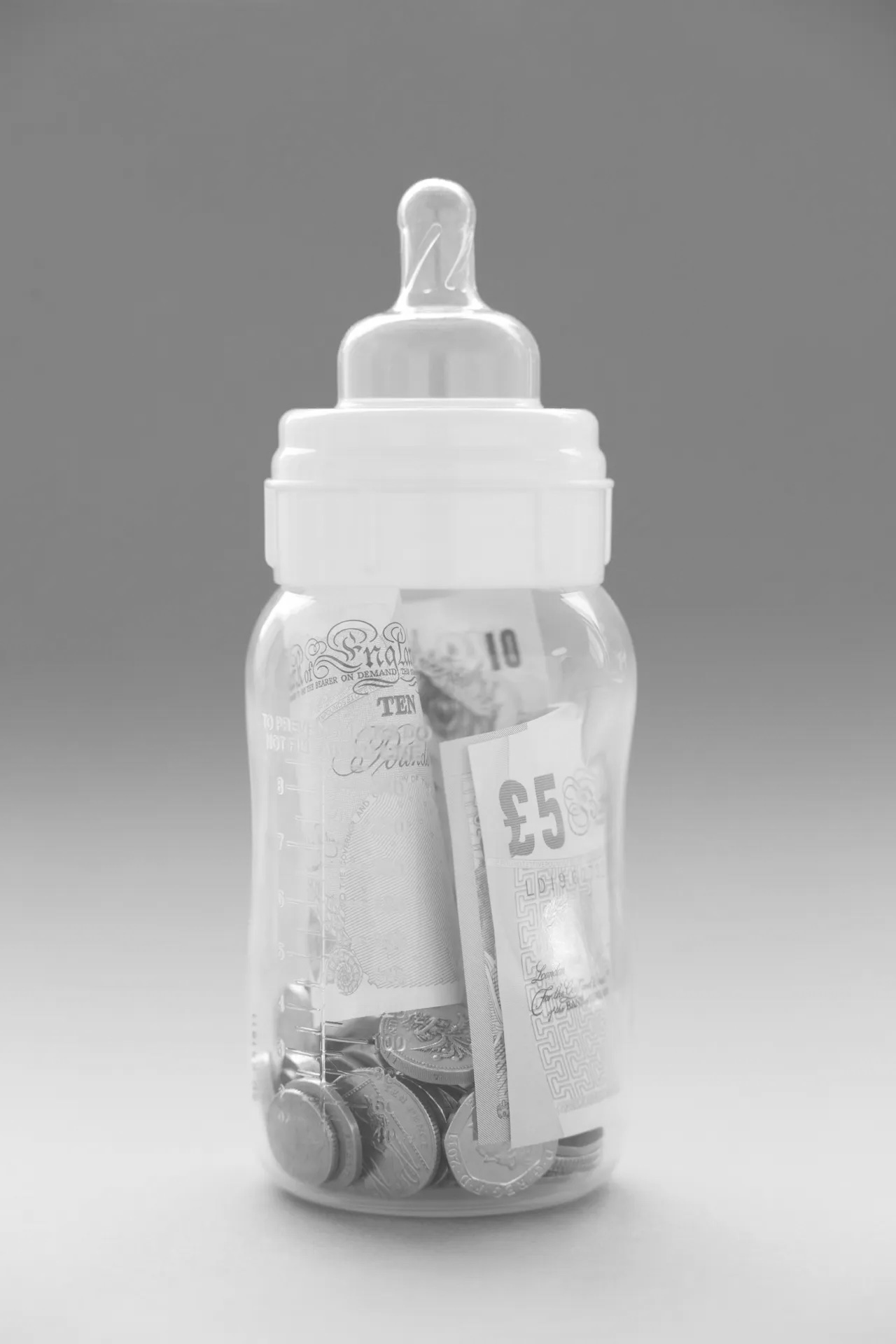What does the Spring Statement mean for me?
Millions of British households are being hit with a wave of household bill hikes and welfare cuts — So how will the Spring Statement impact women like you?


Rachel Reeves has presented her first Spring Statement as Chancellor, outlining Labour’s economic agenda for the coming year and introducing measures that could affect millions of UK households.
From modest maternity leave pay increases to caps on Carer's allowance, the Spring Statement will have a significant impact on women's financial independence and career progression. However, questions remain about whether these changes go far enough to tackle the structural challenges women face in achieving full economic equality. But what does this mean for your money right now?
Five key changes that will impact women
Maternity Leave Pay
Every year, as many as 74,000 women lose their jobs after getting pregnant or taking maternity leave. What's more, despite the UK's extended leave policy, British maternity pay remains relatively low and is often insufficient to maintain pre-birth income levels. A UN report last year revealed that one in four mothers are forced out of the workforce due to soaring childcare costs. Clearly, the UK has a motherhood penalty, so how does the Chancellor's Spring Statement address this?
Increased Statutory Maternity Pay (SMP): SMP will rise to £187.18 per week, an increase of £3.15. This rate also applies to statutory paternity pay and maternity allowance.
Neonatal Care Leave and Pay: A new entitlement, Neonatal Care Leave (NCL), allows parents of babies born on or after April 6, 2025, who require at least seven days of neonatal care, to take up to 12 weeks leave.

Maternity leave pay
Carer's Allowance
In the UK, women make up the majority of unpaid carers. According to the 2021 Census data for England and Wales, approximately 3.0 million female unpaid carers were recorded; tracking with broader statistics that show that women make up about 60% of all carers in the UK. Speaking to Marie Claire UK, Tabitha Morton, Executive Director, UN Women UK, said: "The Government's Spring Statement fails to address that women, particularly those from marginalised and lower-income communities, are disproportionately impacted by welfare cuts. The hard truth is that when these initiatives are cut, women face more financial hardships."
Changes to Carer's Allowances were hinted at before the official Spring Statement, leading to fervent online debate. Now that the key changes have been confirmed, here's what it might mean for you.
Celebrity news, beauty, fashion advice, and fascinating features, delivered straight to your inbox!
Reduction in Eligibility: Approximately 150,000 carers are estimated to lose their Carer's Allowance because of stricter eligibility criteria for Personal Independence Payments (PIP). This change is expected to decrease financial support for carers by £500 million by 2029/30, according to Carers UK.
Increase in Carer's Allowance Rate: For those who remain eligible, Carer's Allowance will rise by 1.7% from £81.90 to £83.30 per week, effective from April 2025.
Earnings Threshold Adjustment: The weekly earnings limit to qualify for Carer's Allowance will increase from £151 to £196, starting in April 2025. This adjustment aligns with the National Minimum Wage increases, potentially allowing more carers to qualify.
Wider Welfare Cuts Affecting Women: The proposed welfare cuts are projected to push an additional 250,000 people, including 50,000 children, into relative poverty by 2029/30, according to data released by The Guardian
Disabled women are particularly vulnerable, facing potential reductions in social security benefits that could further exacerbate economic disparities.

Spring Statement budget cuts
Disability Allowance
"The proposed plans to cut social security for Disabled people will disproportionately impact women who make up the majority of Disabled people and also the majority of people caring for Disabled people," says Morton, adding: "Some women are likely to lose their Carer's allowance which will deepen gender disparities and also hinder the potential for economic growth, social well-being, and progress towards a more equitable society."
The Women's Budget Group's analysis found that together with changes (cuts) to taxes, those measures will have cost Disabled women an average of £4,000 a year by 2028, resulting in an 11% drop in their living standards. Here are the topline figures you need to know.
Tightening of PIP Eligibility: An additional requirement means claimants must score a minimum of four points in at least one daily living activity to qualify for the daily living component of PIP, according to official Government guidelines. This is expected to result in 370,000 current claimants losing their daily living allowance, with an average annual loss of £4,500.
Reduction in Universal Credit Health Element:
The health element of Universal Credit will be frozen at £97 per week for existing claimants until 2029-30.
For new claimants from 2026-27, the health element rate will be halved to £50 per week, also frozen until 2029-30.
Financial Losses: Single women constitute 44% of those adversely affected by these changes, with an average annual loss of £1,610, according to the Women's Budget Group
Overall, 250,000 adults, including a disproportionate number of women, are projected to experience reduced income due to these reforms.
Increased Poverty Risk: The Guardian reports that the reforms are estimated to push an additional 250,000 people, including 50,000 children, into relative poverty by 2029-30, exacerbating existing gender disparities.
Women's Budget Group warn that the changes may also affect carers, many of whom are women, potentially leading to increased caregiving responsibilities without adequate support.
Single-Parent Households
"It's time to stop treating gender equality as 'nice to have' and recognise it for what it is. It is essential to business success, economic growth, and a fairer society," argues Morton. Single mothers make up the majority of single-parent households, with about 90% of single-parent families being headed by women, according to Office for National Statistics.
Single mothers are statistically more likely to live in poverty due to factors such as lower overall household income, the high cost of childcare, and difficulties in accessing flexible, well-paying employment.
The Spring Statement introduced several policy changes with significant implications for single-parent households. While some measures offer modest benefits, others may exacerbate financial challenges, particularly for single mothers. Here's what it could mean for you.
Increase in Universal Credit Standard Allowance: Effective from April 2026, the standard allowance for Universal Credit (UC) will rise. Single parents aged 25 and over can expect an increase from £92 per week in 2025-2026 to £106 per week by 2029-2030.
Reduction in Health-Related Universal Credit Elements: Starting in April 2026, the limited capability for work and work-related activity (LCWRA) element of UC will change.
For new claimants: Universal Credit will decrease from £97 per week in 2025-2026 to £50 per week in 2026-2027, remaining at this level until 2029-2030.
For existing claimants: Universal Credit will be frozen at £97 per week until 2030.
Individuals under 22 will no longer be eligible.
These changes may disproportionately affect single-parent households, as they experience higher rates of disability.
Stamp Duty
Women, who statistically earn less than men and are more likely to be single parents, are set to be hit by increased stamp duty costs. The additional tax could also further strain budgets already stretched by childcare expenses and other financial responsibilities.
Reduction in Stamp Duty Thresholds:
First-Time Buyers: The tax-free threshold for first-time buyers decreases from £425,000 to £300,000. This change means that first-time buyers in London could face an additional £6,250 in stamp duty tax.
Other Homebuyers: For all other property purchases, the threshold drops from £250,000 to £125,000. This reduction signifies that a larger portion of property values will now be subject to stamp duty, increasing the tax burden on many buyers.

Mischa Anouk Smith is the News and Features Editor of Marie Claire UK.
From personal essays to purpose-driven stories, reported studies, and interviews with celebrities like Rosie Huntington-Whiteley and designers including Dries Van Noten, Mischa has been featured in publications such as Refinery29, Stylist and Dazed. Her work explores what it means to be a woman today and sits at the intersection of culture and style. In the spirit of eclecticism, she has also written about NFTs, mental health and the rise of AI bands.